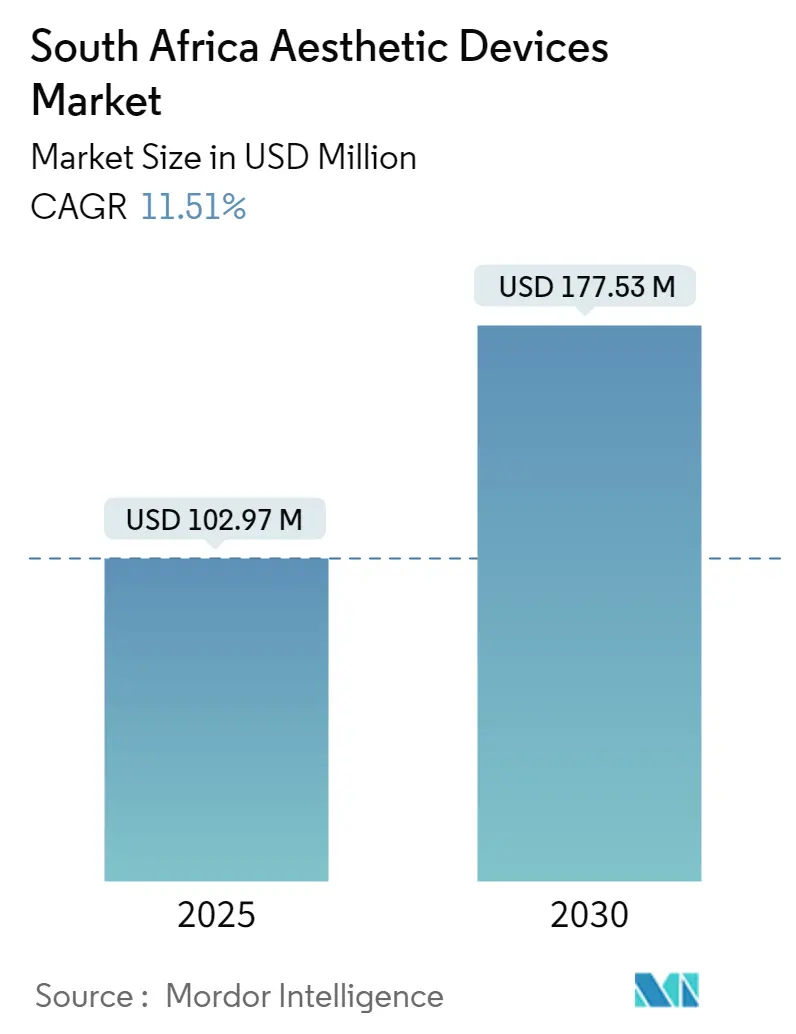
| Study Period | 2019 - 2030 |
| Base Year For Estimation | 2024 |
| Forecast Data Period | 2025 - 2030 |
| Market Size (2025) | USD 102.97 Million |
| Market Size (2030) | USD 177.53 Million |
| CAGR (2025 - 2030) | 11.51 % |
| Market Concentration | Low |
Major Players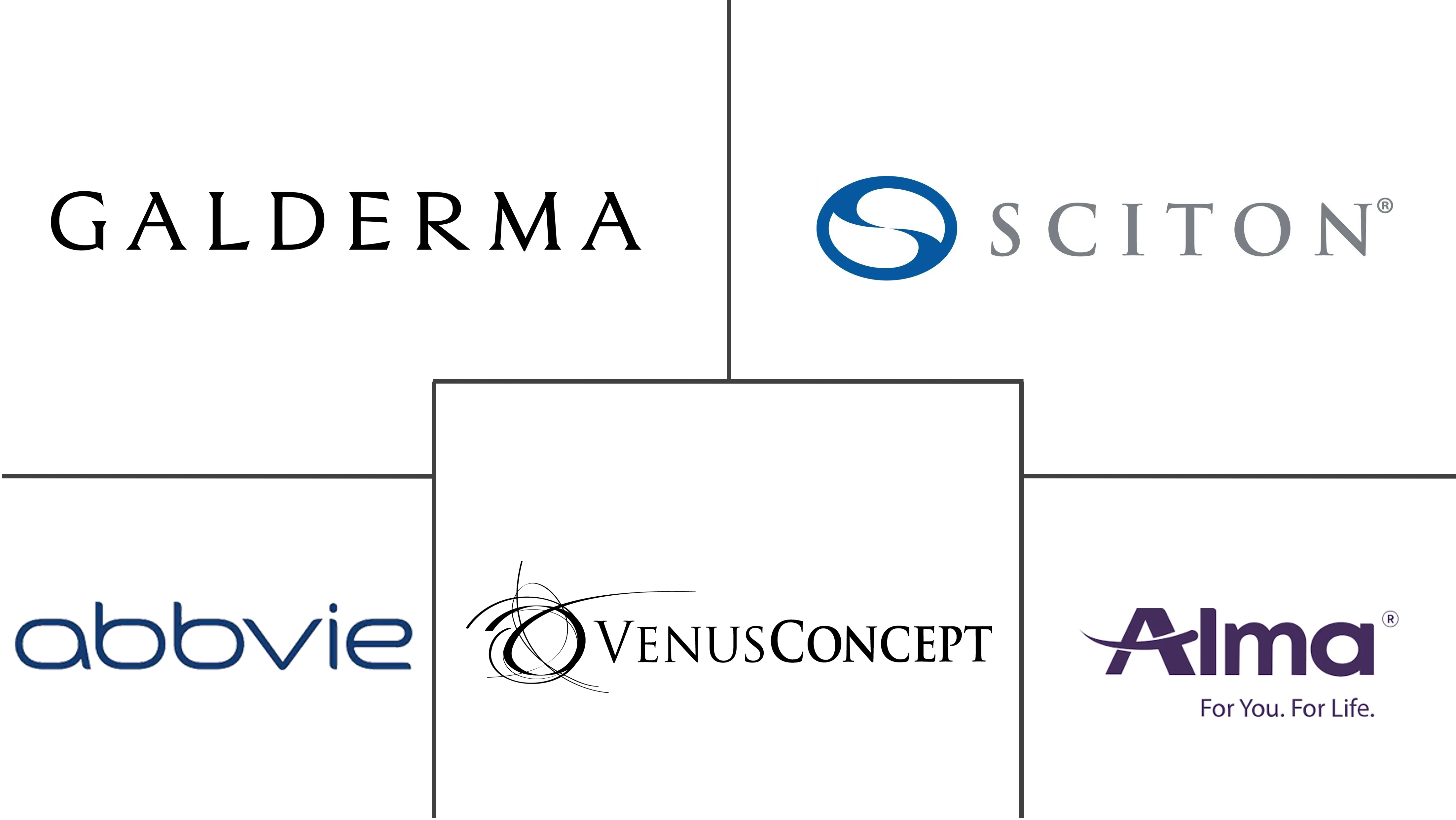
*Disclaimer: Major Players sorted in no particular order |
South Africa Aesthetic Devices Market Analysis
The South Africa Aesthetic Devices Market size is estimated at USD 102.97 million in 2025, and is expected to reach USD 177.53 million by 2030, at a CAGR of 11.51% during the forecast period (2025-2030).
The healthcare system in South Africa witnessed enormous challenges due to the COVID-19 pandemic. All outpatient treatments were postponed or restricted during the COVID-19 pandemic to reduce the risk of viral transmission, as most chronic therapies were regarded as non-urgent. Several aesthetic procedures were delayed during the pandemic due to fear of infection. For instance, as per an article published in January 2021 in PLoS One journal, South Africa had five levels of differing lockdown regulations, which strictly closed all non-essential services, including beauty and tourism. Due to the increased shutdown of cosmetic clinics and aesthetic centers, the demand for aesthetic devices notably reduced, impacting the market growth during the pandemic. In the post-pandemic situation, the market is experiencing steady growth due to increased consciousness of improving physical appearance and the emergence of advanced aesthetic products in the South African market.
One of the significant factors contributing to the growth in the demand for aesthetic devices in South Africa is the high burden of skin diseases and the growing obese population. For instance, a study by the University of Cape Town published in July 2022 indicated that a lack of physical activity and increased consumption of unhealthy food was the leading cause of the rising trend of obesity in South Africa's women of childbearing age. Also, as per the World Obesity Atlas 2023, the prevalence of obesity among children and adolescents in the African Region is predicted to rise rapidly from 2020 to 2035, with girls, particularly, seeing a significant increase from 5% to 14%. For women, obesity is anticipated to rise from 18% to 31% (nearly a third of all women) by 2035. As a result of the increase in obesity cases, the number of people obtaining cosmetic procedures in South Africa is likely to rise, leading to the growth of the studied market.
Some opportunities for market players are the increasing trend in fashion and growing awareness of self-beauty and personal care. The other reasons that help in the growing demand for aesthetic products include the rise in the yearly cosmetic procedures. For instance, according to a study published in June 2023 in the Journal of Cosmetic Dermatology, black African patients were interested in aesthetic treatment for a variety of conditions, in which the patients with darker skin in South Africa were found to benefit from treatment with fillers, neurotoxins, and energy-based devices. Although the rate of growth in the country is low, the fact remains that people are becoming more concerned about their image, especially with the increasing standard of living that also boosts market growth during the forecast period. Furthermore, the increase in the use of social media among the South African population is likely to create a demand for aesthetic products and devices as it can help to educate patients and the public regarding the availability and advancements in aesthetic devices, which is expected to be a notable growth factor for the market growth over the forecast period.
Furthermore, the presence of key market players and their strategic activities are expected to increase the demand for aesthetic devices in South Africa. For instance, in March 2021, L'Oréal inaugurated its new Research & Innovation Center to study African hair and skin specificities and sub-Saharan consumers' beauty routines and expectations. The Research & Innovation Center in South Africa is the Group's 7th R&I hub globally, which hosts product development, evaluation, and advanced research teams.
Thus, due to the increased burden of obesity, the rise in demand for cosmetic procedures, and the strategic activities of the key players, the studied market is expected to witness significant market growth over the forecast period. However, the high cost of aesthetic procedures and the poor reimbursement scenarios are expected to slow down the development of the market.
South Africa Aesthetic Devices Market Trends
Skin Resurfacing and Tightening Segment is Expected to Hold Significant Market Share in the South African Aesthetic Devices Application Segment
Skin resurfacing refers to the procedure where the outermost layer of the skin is removed with precision, usually with the help of a laser. The procedure improves skin firmness and thickness, reduces wrinkles and scars, evens out skin coloring, tightens skin, and removes lesions.
Due to its minimum invasiveness and improvements in product technology, skin tightening techniques are used more frequently after rapid weight loss or bariatric surgery. For instance, according to the 7th IFSO Global Registry Report, 187 bariatric procedures were carried out in South Africa. As people lose the elasticity of their skin after bariatric surgery, the increase in bariatric surgery is likely to create a demand for skin-tightening devices, thereby contributing to market growth in South Africa. In laser skin resurfacing, various lasers, including CO2, erbium, pulsed dye, and fractional lasers, are tuned for multiple skin conditions and skin types. The efficiency and benefits these laser devices offer in skin resurfacing and tightening fuels the demand for the segment over the forecast period in South Africa.
Furthermore, sun exposure, aging, and lack of proper skin can lead to sagging and aging in both men and women, creating a demand for skin tightening. For instance, a study published in April 2023 in Skin Research and Technology journal reported lower wrinkles/texture, pigmentation, and ptosis/sagging scores at 50-59 in South African men. The mean age of visibility of wrinkles/texture for South African men was 39 and 45 years for ptosis/sagging. Thus, owing to the risk of sagging and skin loosening among middle-aged males, the demand for skin-tightening aesthetic devices will likely rise, contributing to segment growth over the study period.
Hence, owing to the high prevalence of bariatric surgeries and the population increase with skin aging and sagging, the studied segment is expected to witness significant growth over the coming years.
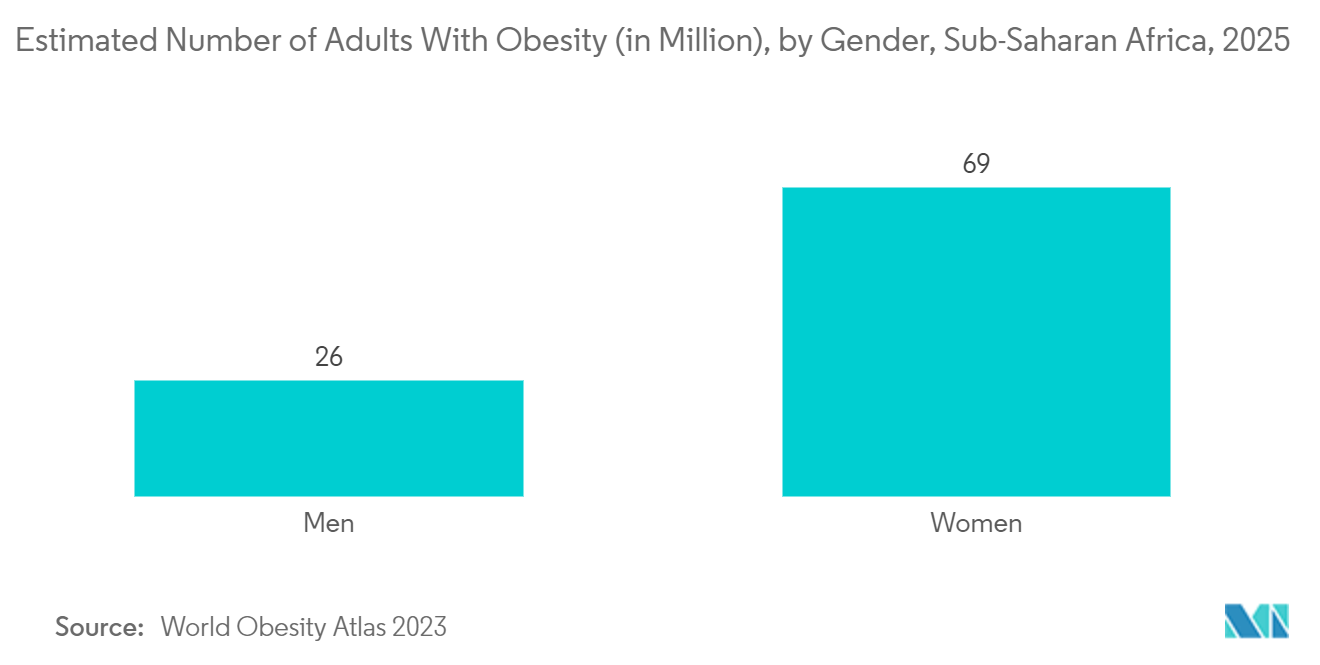
Energy Based Aesthetic Devices Segment is Anticipated to Witness a Growth in the South Africa Aesthetic Devices Market Over the Forecast Period
Energy-based aesthetic devices are medical devices that utilize various forms of energy, such as light, radiofrequency (RF), ultrasound, or laser, to address a wide range of cosmetic needs and offer non-invasive or minimally invasive treatments. Factors such as an increase in the adoption of laser devices for resurfacing, laser hair removal, and vascular and pigmented lesions is one of the major factor driving the segment growth over the forecast period. For instance, a comparative study published by researchers from South Africa in May 2023 in PLoS One journal stated that a professional laser showed an overall hair reduction of 85% on the right axilla and 88% on the left axilla. In contrast, the home-use laser showed an overall decrease of 52% on the right axilla and 46,3% on the left axilla. Owing to the increased efficiency of hair reduction in laser devices, the demand for energy-based aesthetic devices will likely rise, fuelling segment growth over the study period.
Furthermore, RF-based devices are used for the aesthetic procedures of larger areas, such as the abdomen or flank. These devices provide treatment in a short time. RF therapy uses low-energy radiation to heat the deep layer of the skin called the dermis. Also, other methods are ultrasonic liposuction (UAL), a specialized cannula that transmits ultrasound vibrations within the body. These ultrasound vibrations help burst the fat cells' walls by liquifying the fat and making it easier to suction. Additionally, energy-based aesthetic devices are utilized for scar treatments. For instance, a study published by a researcher in South Africa in October 2022 in PubMed stated that a laser with surgical scar excision was one of the major options for keloid scar management unless combined with appropriate adjuvant therapy. Hence, owing to the adoption of energy-based devices in scar treatment, the demand for the studied segment will likely rise, contributing to segment growth over the forecast period.
Thus, owing to the advantages offered by energy-based aesthetic devices and the rise in the adoption of skin lasers, the studied segment is expected to witness significant growth over the coming years.
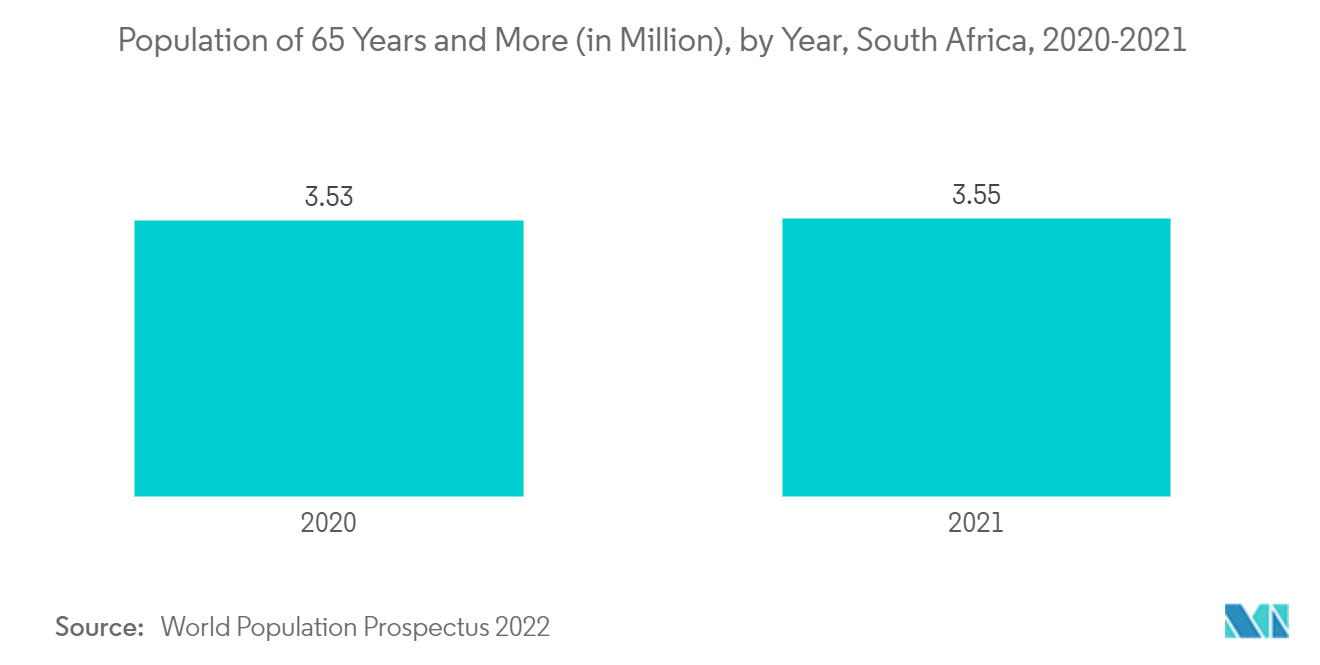
South Africa Aesthetic Devices Industry Overview
South Africa aesthetic devices market is moderately competitive and consists of several players. In terms of market share, a few of the major players are currently dominating the market, and some prominent players are vigorously making acquisitions and joint ventures with other companies to consolidate their market positions in the country. Some of the key companies in the market are Abbvie (Allergan Inc.), Johnson & Johnson, Alma Lasers, and Galderma, among others.
South Africa Aesthetic Devices Market Leaders
-
Alma Lasers
-
Galderma
-
Venus Concept
-
Abbvie (Allergan Inc.)
-
Sciton
- *Disclaimer: Major Players sorted in no particular order
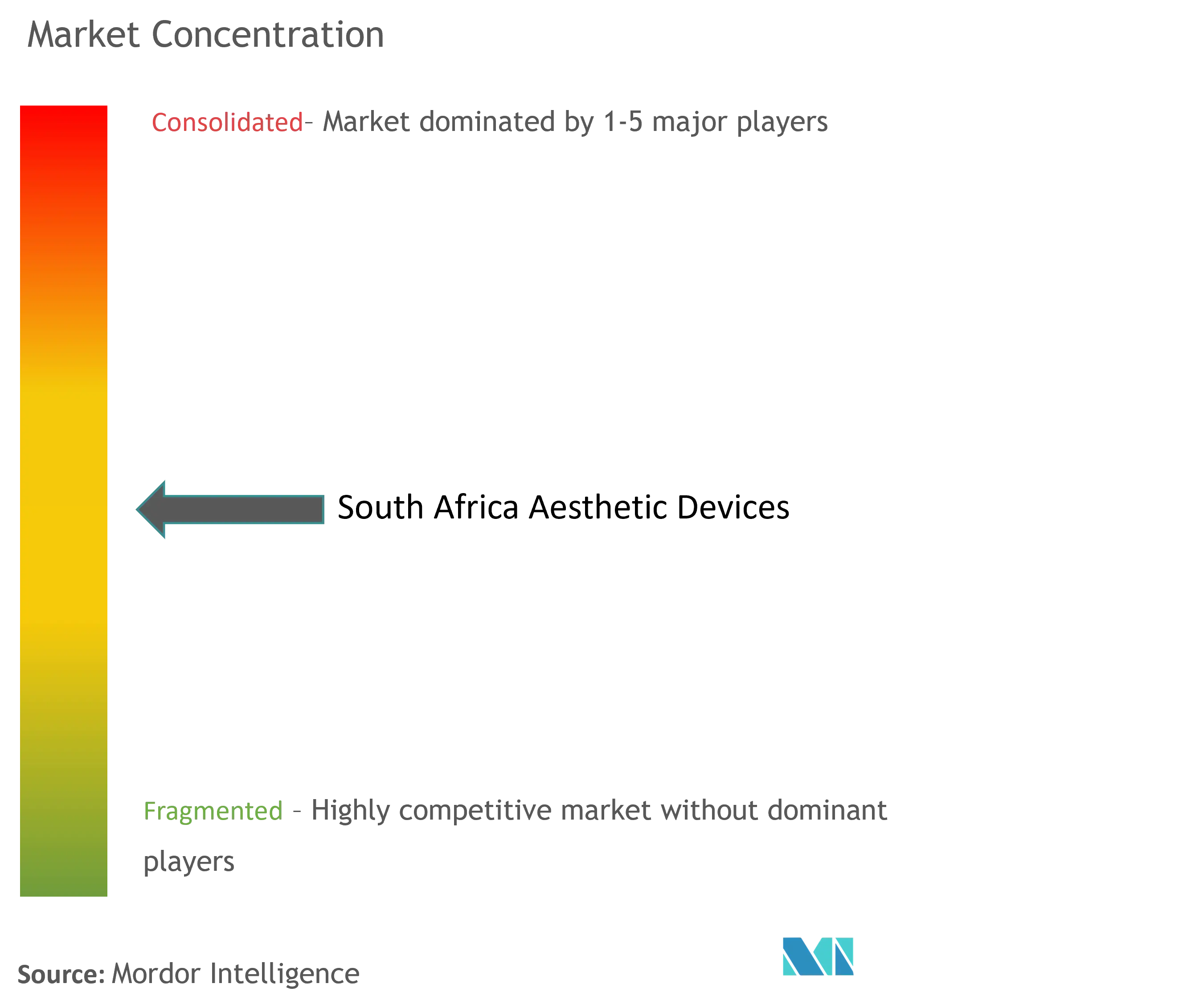
South Africa Aesthetic Devices Market News
- In July 2022, Lutronic's aesthetic laser device, DermaV was cleared for marketing in South Africa. DermaV is an Nd: YAG laser surgical instrument for use in plastic surgery and in dermatology, and it is equipped with long-pulsed 532nm and Nd: YAG 1064nm wavelength bands.
- In March 2022, Allergan Aesthetics launched HArmonyCa with lidocaine in South Africa. HArmonyCa dermal filler is designed to restore facial volume and correct deficiencies by promoting the generation of natural endogenous collagen.
South Africa Aesthetic Devices Industry Segmentation
As per the scope of the report, aesthetic devices refer to all medical devices used for various cosmetic procedures, including plastic surgery, unwanted hair removal, excess fat removal, anti-aging, aesthetic implants, and skin tightening. The Aesthetic Medicine South Africa Market Report is Segmented by Type of Devices (Energy-based Aesthetic Devices and Non-energy-based Aesthetic Devices), Application (Skin Resurfacing and Tightening, Hair Removal and Tattoo Removal, Facial Aesthetic Procedures, and Other Applications), and End User (Hospitals, Clinics, and Home Settings). The report offers the value (in USD million) for the above segments.
| By Type of Devices | Energy-based Aesthetic Devices |
| Non-energy-based Aesthetic Devices | |
| By Application | Skin Resurfacing and Tightening |
| Hair Removal and Tattoo Removal | |
| Facial Aesthetic Procedures | |
| Other Applications | |
| By End User | Hospitals |
| Clinics | |
| Home Settings |
South Africa Aesthetic Devices Market Research FAQs
How big is the South Africa Aesthetic Devices Market?
The South Africa Aesthetic Devices Market size is expected to reach USD 102.97 million in 2025 and grow at a CAGR of 11.51% to reach USD 177.53 million by 2030.
What is the current South Africa Aesthetic Devices Market size?
In 2025, the South Africa Aesthetic Devices Market size is expected to reach USD 102.97 million.
Who are the key players in South Africa Aesthetic Devices Market?
Alma Lasers, Galderma, Venus Concept, Abbvie (Allergan Inc.) and Sciton are the major companies operating in the South Africa Aesthetic Devices Market.
What years does this South Africa Aesthetic Devices Market cover, and what was the market size in 2024?
In 2024, the South Africa Aesthetic Devices Market size was estimated at USD 91.12 million. The report covers the South Africa Aesthetic Devices Market historical market size for years: 2019, 2020, 2021, 2022, 2023 and 2024. The report also forecasts the South Africa Aesthetic Devices Market size for years: 2025, 2026, 2027, 2028, 2029 and 2030.
Our Best Selling Reports
South Africa Aesthetic Devices Industry Report
Statistics for the 2025 South Africa Aesthetic Devices market share, size and revenue growth rate, created by Mordor Intelligence™ Industry Reports. South Africa Aesthetic Devices analysis includes a market forecast outlook for 2025 to 2030 and historical overview. Get a sample of this industry analysis as a free report PDF download.




